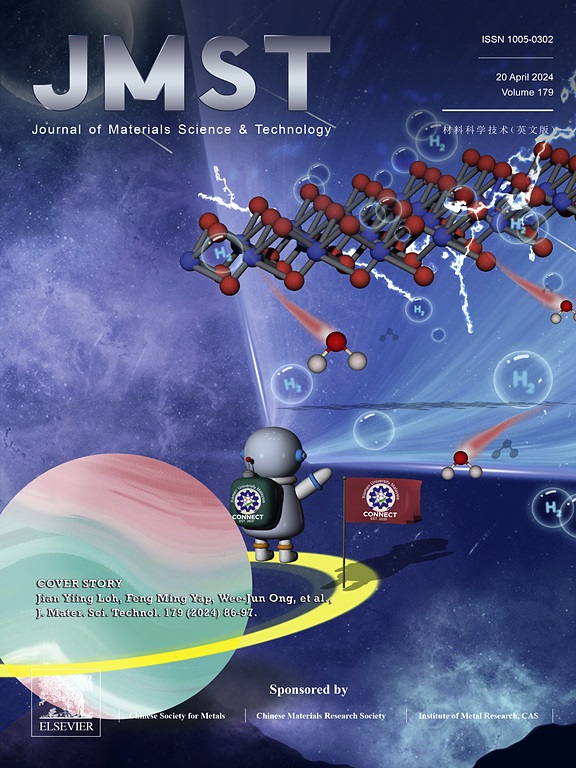Electrostatic self-assembly of MnIn2S4@BiVO4 S-Scheme heterojunction for photothermal-enhanced photocatalytic antibiotic removal with the boosted spatial charge separation
IF 14.3
1区 材料科学
Q1 MATERIALS SCIENCE, MULTIDISCIPLINARY
引用次数: 0
Abstract
The widespread use of antibiotics has inflicted significant environmental damage, prompting global concern and the urgent need for effective remediation strategies. In this study, by designing the structure and interface functionality on the basis of the different work functions, we developed a novel S-Scheme MnIn2S4@BiVO4 heterojunction via electrostatic self-assembly, displaying the heightened photocatalytic performance in the breakdown of tetracycline hydrochloride (TC) upon visible light irradiation. The removal rate of superior MnIn2S4@BiVO4 heterojunction was 1.83 and 3.55 times higher than that of individual components MnIn2S4 and BiVO4, respectively. By offering a substantial contact area between the catalyst and the reaction solution, the heterogeneous interface boosts the activation and degradation of pollutants. Furthermore, the photothermal effect expedites the degradation reaction. Capturing agent experiments and ESR investigations identified ·O₂⁻ and ·OH as the dominant reactive species driving this degradation process and an analysis of intermediates by HPLC-MS with a notable reduction in the toxicity of the degradation products was conducted to explore a potential degradation pathway for TC. The heightened photocatalytic efficacy of the heterojunction is credited to the S-scheme charge transfer mechanism, which boosts the utilization of charge separation, as evidenced by in-situ XPS and DFT calculations. This study offers novel perspectives on the development of S-scheme heterojunction to improve the photocatalytic degradation of persistent organic pollutants.

静电自组装MnIn2S4@BiVO4 S-Scheme异质结光热增强光催化抗生素去除与促进空间电荷分离
抗生素的广泛使用造成了严重的环境破坏,引起了全球的关注,迫切需要有效的修复策略。在本研究中,我们根据不同的功函数设计了结构和界面功能,通过静电自组装开发了一种新的S-Scheme MnIn2S4@BiVO4异质结,在可见光照射下对盐酸四环素(TC)的击穿表现出更高的光催化性能。优越MnIn2S4@BiVO4异质结的去除率分别是单独组分MnIn2S4和BiVO4的1.83倍和3.55倍。通过在催化剂和反应溶液之间提供大量的接触面积,非均相界面促进了污染物的活化和降解。此外,光热效应加速了降解反应。捕获剂实验和ESR研究确定·O₂-和·OH是驱动这一降解过程的主要反应物质,并通过HPLC-MS对中间体进行分析,降解产物的毒性显著降低,以探索TC的潜在降解途径。原位XPS和DFT计算证明,异质结光催化效率的提高归功于S-scheme电荷转移机制,该机制促进了电荷分离的利用。本研究为发展s型异质结以改善光催化降解持久性有机污染物提供了新的视角。
本文章由计算机程序翻译,如有差异,请以英文原文为准。
求助全文
约1分钟内获得全文
求助全文
来源期刊

Journal of Materials Science & Technology
工程技术-材料科学:综合
CiteScore
20.00
自引率
11.00%
发文量
995
审稿时长
13 days
期刊介绍:
Journal of Materials Science & Technology strives to promote global collaboration in the field of materials science and technology. It primarily publishes original research papers, invited review articles, letters, research notes, and summaries of scientific achievements. The journal covers a wide range of materials science and technology topics, including metallic materials, inorganic nonmetallic materials, and composite materials.
 求助内容:
求助内容: 应助结果提醒方式:
应助结果提醒方式:


